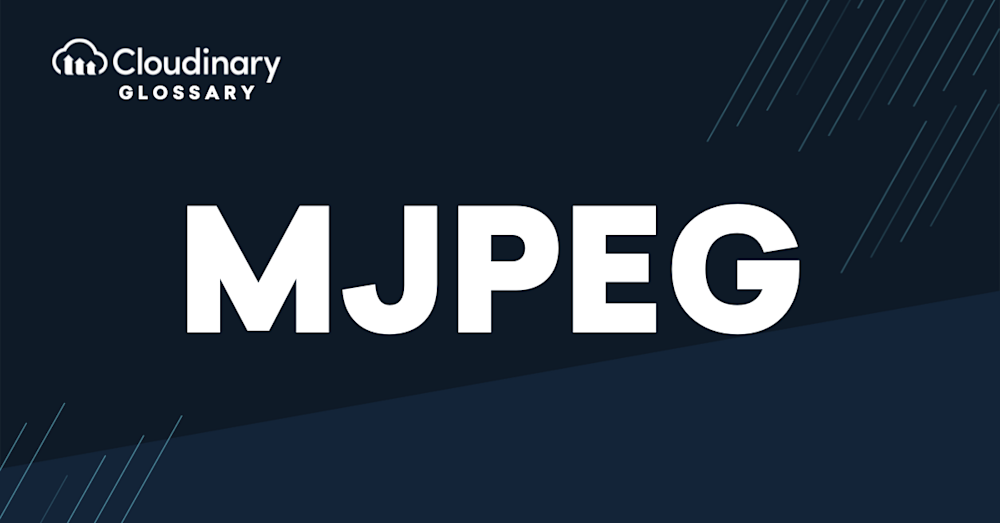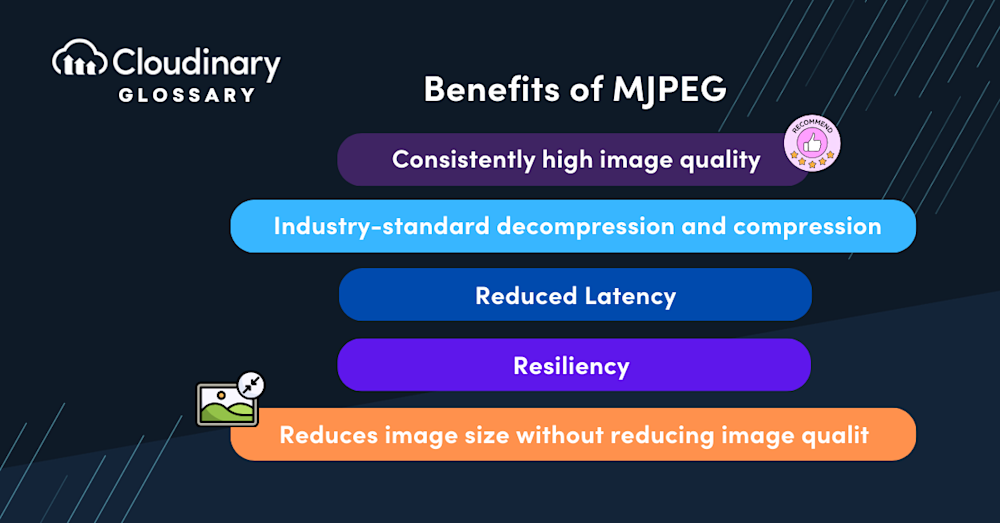What Is MJPEG?
MJPEG (Motion JPEG) is a video compression format that encapsulates individual JPEG images as separate frames, allowing for high-quality video streaming with minimal losses in visual fidelity. Unlike more advanced video compression methods (e.g., H.264 or H.265), MJPEG does not rely on inter-frame compression, meaning that each frame is compressed independently of the others. This approach simplifies decoding and playback, resulting in lower computational demands for devices.
However, it’s worth noting that MJPEG’s independent frame encoding leads to larger file sizes compared to more sophisticated compression techniques. As a result, MJPEG may not be the ideal choice for scenarios that require constrained bandwidth or storage. Despite this, MJPEG remains popular in specific applications, such as IP cameras and video editing, where maintaining image quality is of utmost importance.
The Advantages and Disadvantages of MJPEG
As with any technology, it’s essential to weigh the pros and cons of MJPEG. Understanding these can enable you, as a developer or technical professional, to establish whether MJPEG is the most effective choice for your specific application.
Advantages
- Simplicity of Decoding. As each frame is independently compressed, MJPEG videos are easier to decode, requiring less computational power.
- High-Quality Video Streaming. MJPEG delivers exceptional image quality, as no data is lost between frames.
- Real-Time Video Editing. Due to frame-by-frame compression, editing or manipulating videos in real-time is much easier.
Disadvantages
- Large File Sizes. Because each frame is compressed separately, MJPEG files tend to be larger, which may lead to storage issues.
- High Bandwidth Requirement. MJPEG requires more bandwidth compared to other more robust compression techniques, potentially limiting its use in certain environments.
Lack of Support. Some modern platforms and software may not fully support MJPEG, affecting interoperability.
MJPEG vs MPEG
When comparing MJPEG and MPEG formats, they represent two different approaches to video compression, built to cater to distinct needs and conditions. MJPEG adopts a relatively simple method, compressing each video frame individually, much like a series of JPEG images. This results in high-quality video images and lower computational power demands during decoding, but it also leads to larger file sizes and higher bandwidth needs, making MJPEG less suitable for low-storage or low-bandwidth scenarios.
On the other hand, MPEG uses inter-frame compression, a technique that reduces redundant information across successive frames. This approach results in substantially smaller file sizes and lower bandwidth requirements compared to MJPEG, making it an excellent choice for broadcasting and online streaming. However, this efficiency comes at a cost: MPEG files are more complex to encode and decode, and the inter-frame compression can lead to less precise video editing capabilities and lower image quality in certain situations. In essence, between MJPEG and MPEG, the choice largely depends on the specific requirements of your project, whether that be uncompromising image quality, file size limitations, or computational complexity.
Optimizing MJPEG Workflows with Cloudinary
MJPEG is a popular video compression standard used for high-quality video applications. It has advantages in terms of image quality, ease of implementation, and simplicity, but also some limitations such as large file sizes and low compression ratios.
Cloudinary offers powerful tools to optimize MJPEG workflows. You can leverage advanced features like image optimization, transformation presets, and responsive delivery to enhance image and video quality, while ensuring optimal performance and viewer experiences. By using Cloudinary, content creators can optimize their workflows and deliver high-quality video content that meets their needs while improving user experience and reducing storage and bandwidth costs.
Don’t just adapt to the digital revolution – embrace it. Start with Cloudinary today and let this be your powerhouse for exceptional content delivery.
Check Out Our Tools That You May Find Useful:



